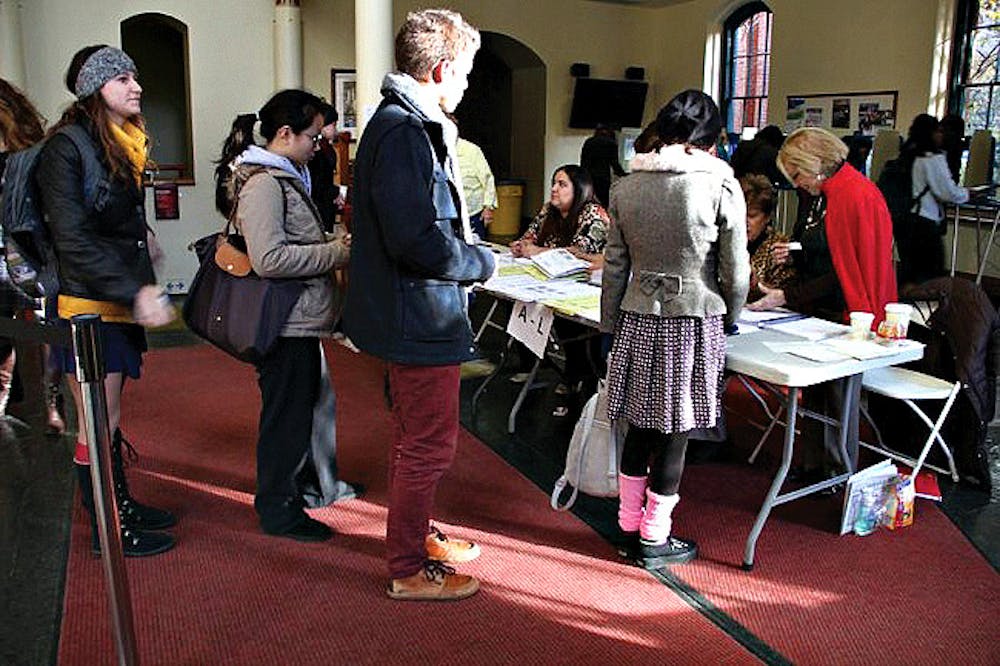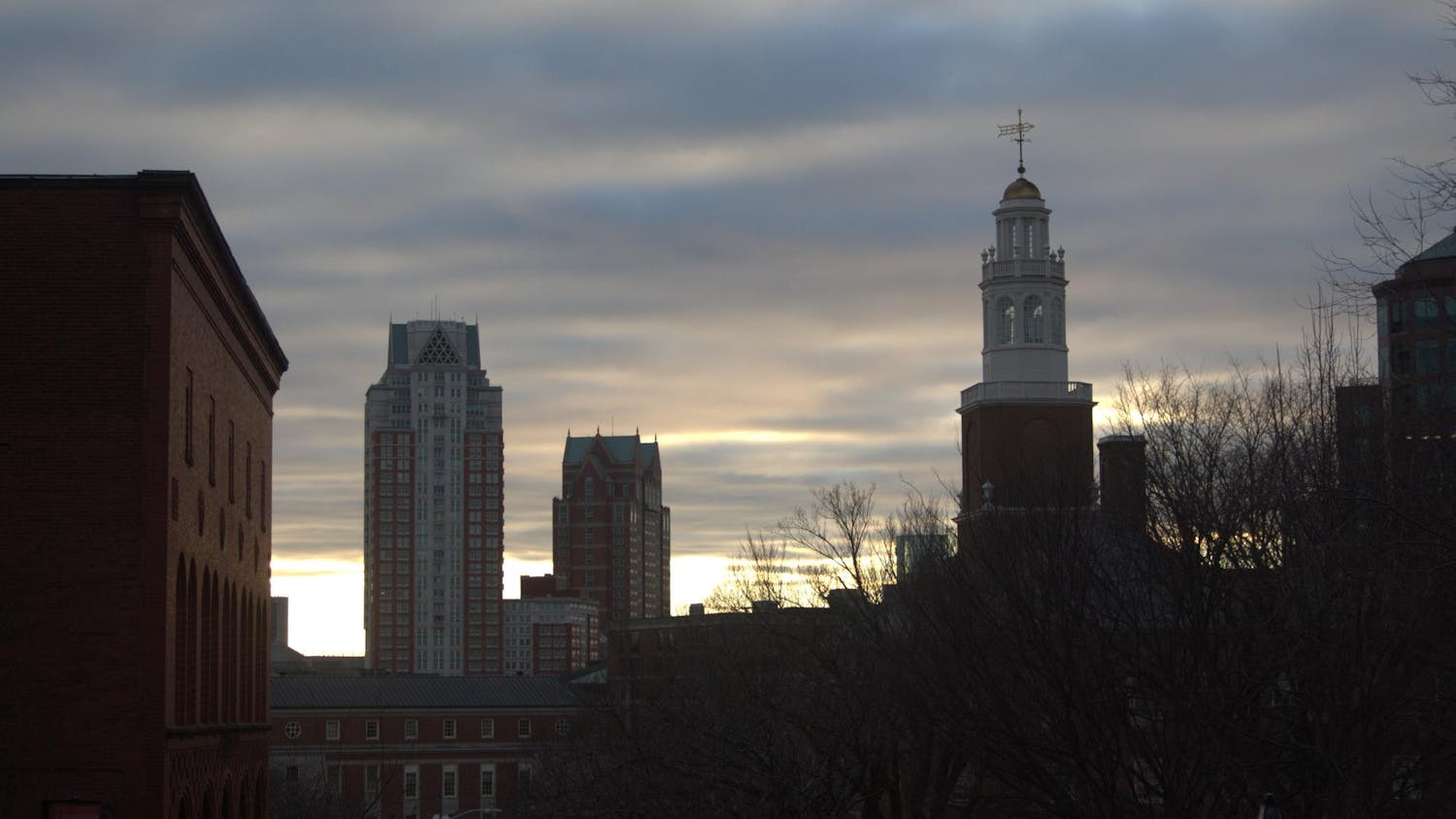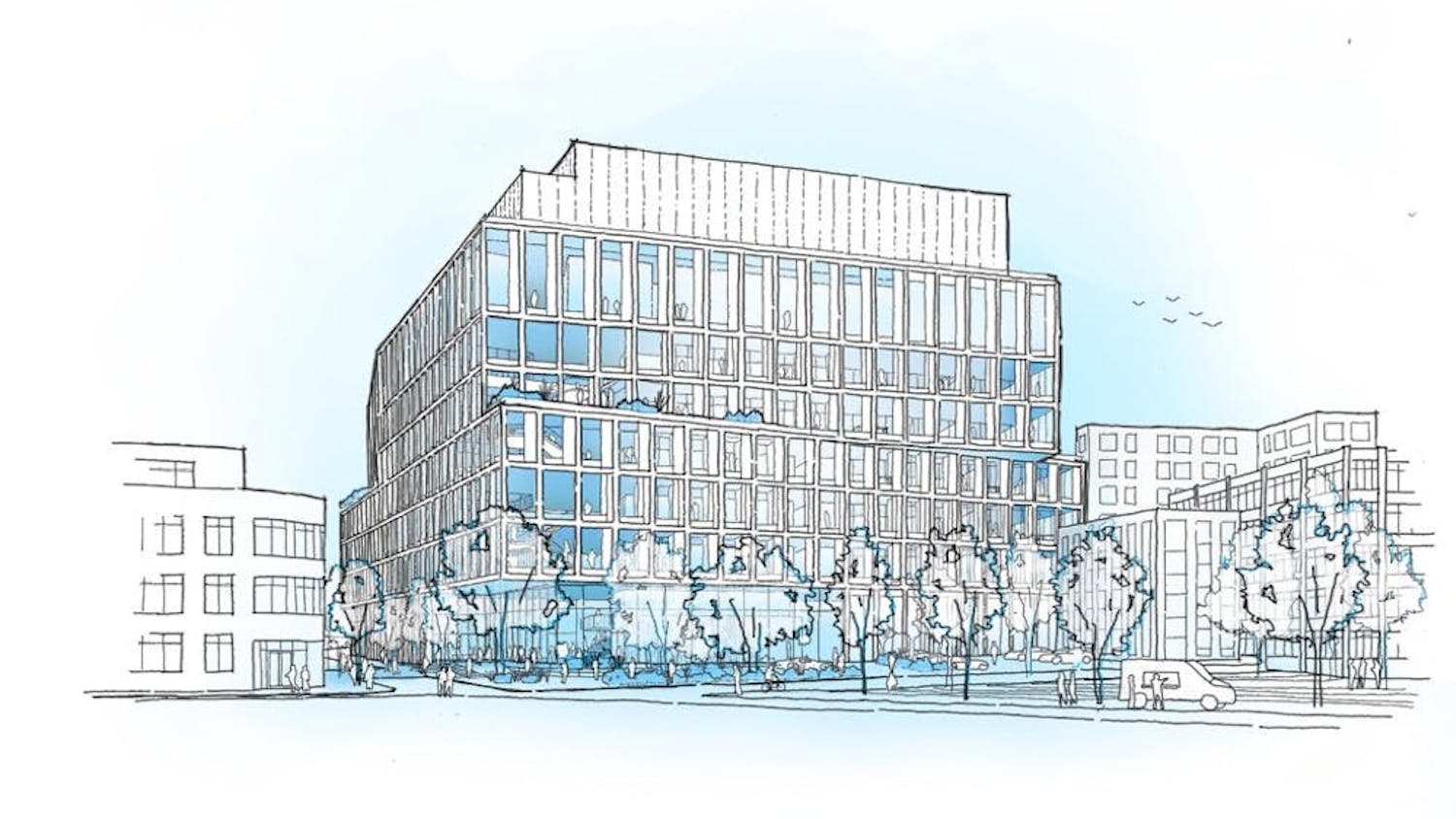Before most Rhode Islanders reach for their morning coffee today, poll workers across the state will have begun feeding ballots into voting machines, which they will continue to do throughout the day, watching the number of votes cast tick upward in what could become a critical election year. These workers play a large part in ensuring this election day runs smoothly, a particularly important task after numerous issues with voting in the 2012 election, such as broken machines and long lines.
Polling places open this morning at 7 a.m. and close at 8 p.m. As of Monday, 114,004 people were registered to vote in Providence, said Kathy Placencia, administrator of elections for the Providence Board of Canvassers. Placencia said the Board of Canvassers expects the number of voters in 2014 to be under the number in 2012 because it is a midterm election year, and these years typically draw fewer voters to the polls than a presidential election year. In 2012, 58.6 percent of eligible Rhode Islanders cast their vote at the polls, a 6.8 percent decline from the 2008 election, according to Nonprofit Vote, a nonpartisan organization that partners with other nonprofits to encourage participation in elections. The 2010 midterm election only brought in 48.93 percent of registered voters, according to the Rhode Island Board of Elections.
While long lines discouraged some voters in 2012 and led to delays at polling places throughout the state, officials expect to mitigate any potential problems this year because there will be fewer voters and a shorter ballot. This year’s ballot is only two pages, while the 2012 ballot was three pages long, Placencia said.
“If there’s a long line, it can dissuade people to stay because of workplace or child obligations,” said Steven Brown, executive director of the Rhode Island American Civil Liberties Union.
The city has increased the number of technicians on call to help with the voting machines from two to 12 this year, Placencia said, adding that there is a mechanism for manually feeding ballots into machines should the city still not have enough technicians.
Placencia said the voter ID law, which was new in the 2012 election, will also not be a hindrance to elections this year. “We’ve already gone through two elections with voter ID, voters are more aware of it. … Everything ran smoothly in September.”
The state’s voter ID law requires residents to show proof of a valid photo ID in order to vote. In 2012 and the September primary, some voters without identification were refused a provisional ballot — issued to those unable to present identification at a polling place at the time of voting — Brown said. People were told by elections officials they could not vote without an ID and were instructed to go home and return with one, Brown said, adding that this limited people’s right to vote.
To address these issues in this election, the RIACLU prepared brochures and flyers to educate voters about their rights, Brown said. “We have been trying to get the word out, but the people who need it most are the poll workers themselves … we don’t know how much they have been trained.”
But Placencia wrote in an email to The Herald that poll workers have been trained by the State Board of Elections about the components of the voter ID laws and how to handle issues that might come up.
The RIACLU has stationed polling monitors, individuals who will remain at polling places throughout the day, to “check up on how polls are being conducted as well as check how voter ID laws are being put into place,” Brown said.
Throughout election day, the Board of Canvassers will be in the office and on call, handling problems as they arise, Placencia said. She expects their biggest challenges will be the two-page ballot because it might take people longer to cast their votes, she wrote in an email. The ballot from the last midterm election only had four ballot questions compared to this year’s seven questions, and was a shorter form, according to the Board of Elections website.
Another challenge that the Board of Elections will address is ensuring that any campaigners outside of polling places stand at least 50 feet away from the entrance, she wrote.

ADVERTISEMENT




